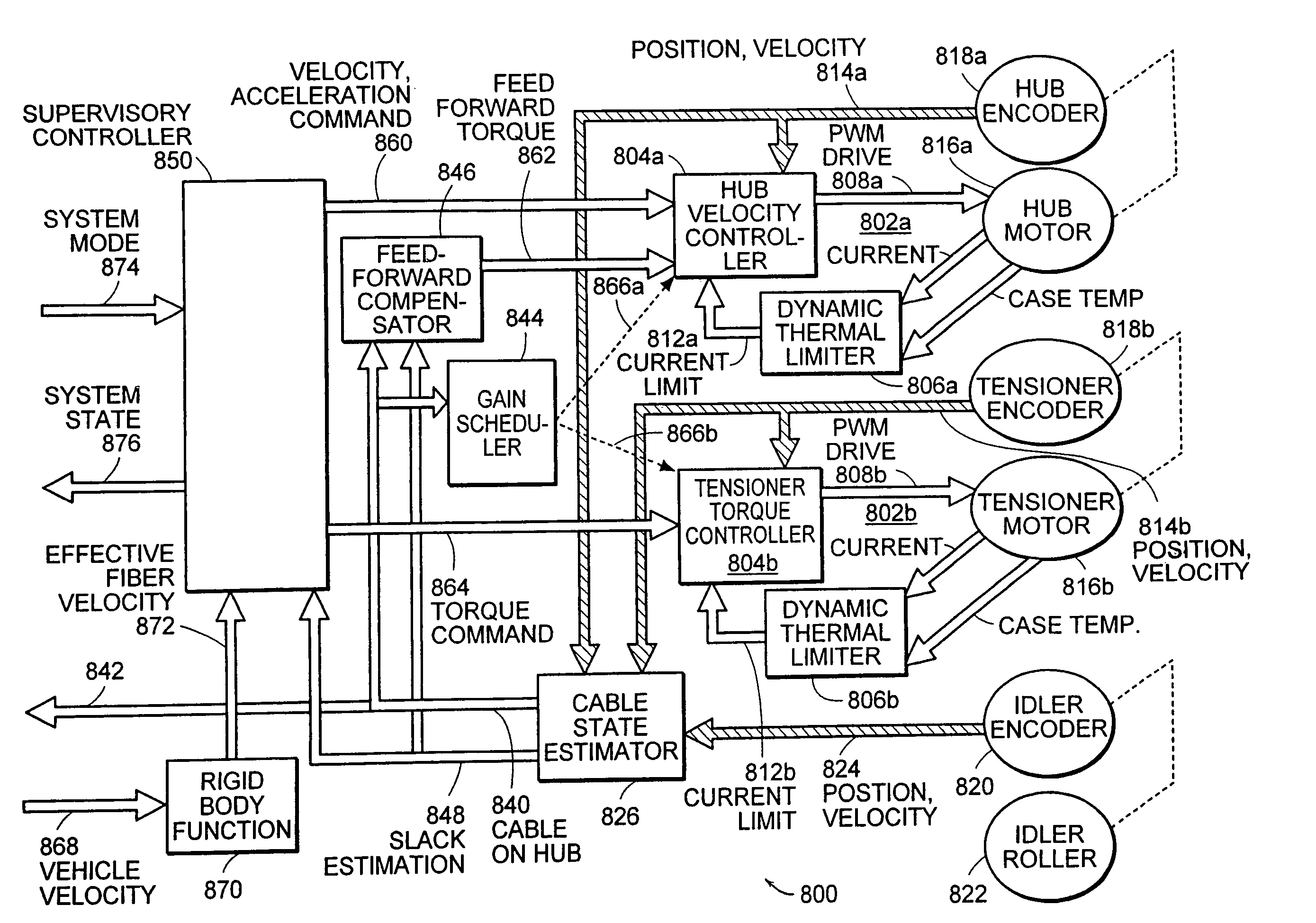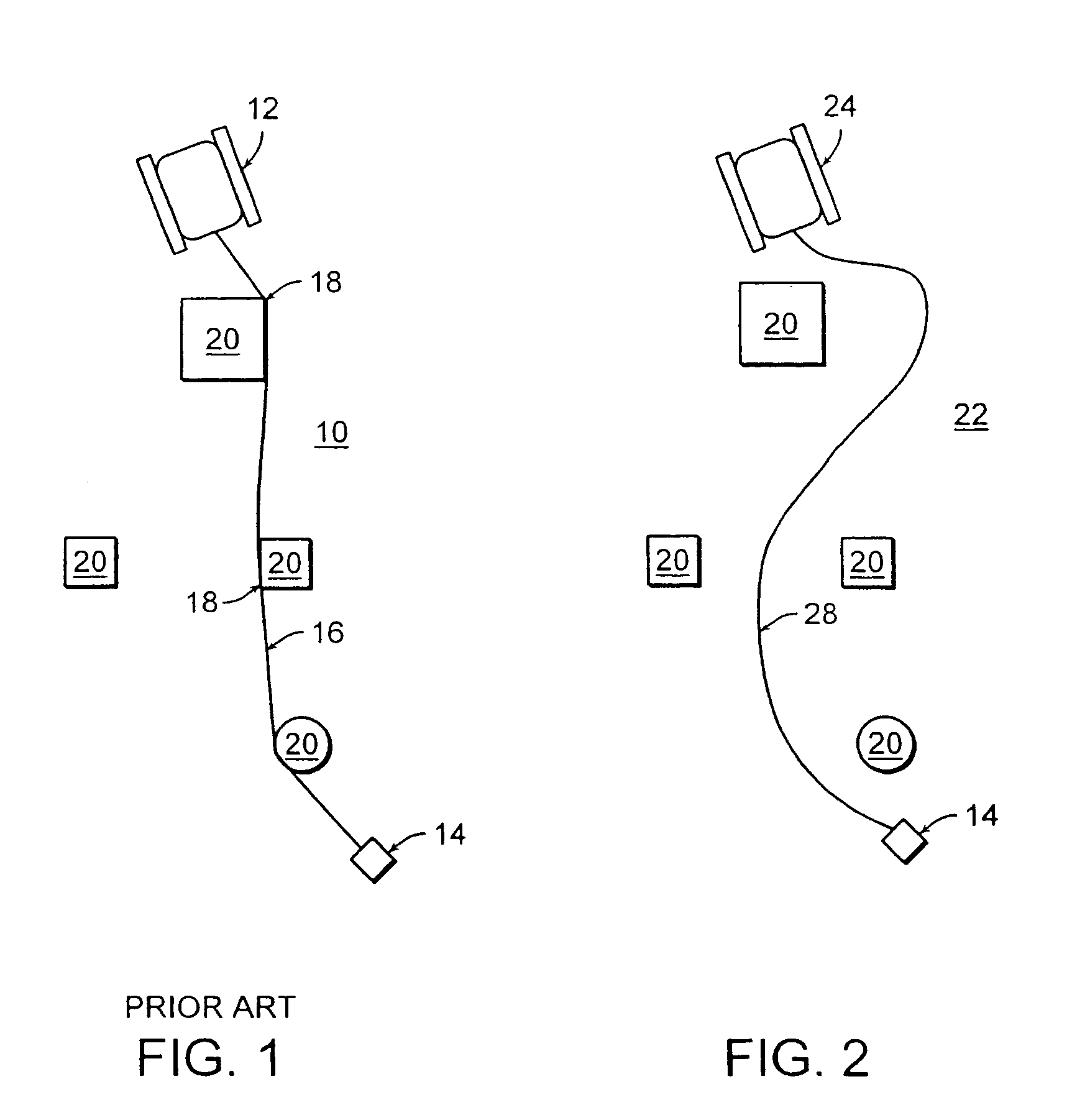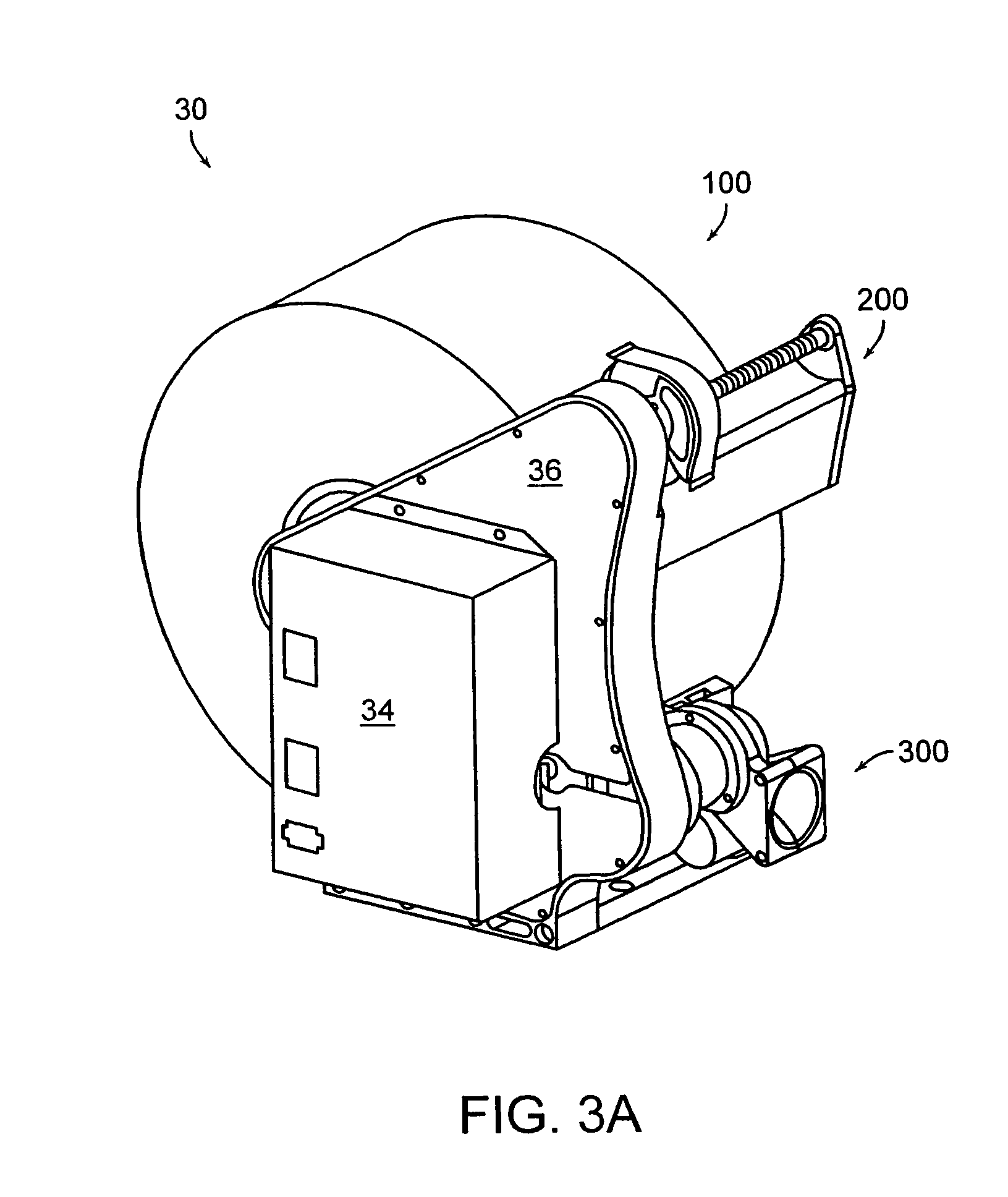Communications spooler for a mobile robot
a robot and communication technology, applied in the field of robotic systems and unmanned vehicles, can solve the problems of signal sent over wireless systems can suffer from limited range and radio or environmental interference, and human beings in similar situations are at risk, etc., to achieve the effect of zero tension and zero tension
- Summary
- Abstract
- Description
- Claims
- Application Information
AI Technical Summary
Benefits of technology
Problems solved by technology
Method used
Image
Examples
Embodiment Construction
[0030]FIG. 1 is a schematic view of a mobile robot 12 employing a prior art cable handling system during operation. The robot 12 operates in an area 10, that may be either bounded (as within a room or other enclosed space) or unbounded (as being used outdoors). An operator (not shown) directs the robot 12 from or near a remote, stationary base 14. Generally, the operator navigates the robot 12 as required during the course of an appointed task, driving or otherwise guiding the robot 12 around and in between a number of obstacles 20. A cable 16 is dispensed from the robot 12 as it moves away from the base 14. Since the cable 16 is kept taut, it can get caught on the obstacles 20, creating kinks 18 as the cable bends around them. These kinks 18 can damage the cable 16 and effect the integrity of transmission of a signal along the cable 16. Additionally, the cable 16 is subject to high-tension loads that can have a detrimental effect on the longevity of the cable 16. The tension on the...
PUM
 Login to View More
Login to View More Abstract
Description
Claims
Application Information
 Login to View More
Login to View More - R&D
- Intellectual Property
- Life Sciences
- Materials
- Tech Scout
- Unparalleled Data Quality
- Higher Quality Content
- 60% Fewer Hallucinations
Browse by: Latest US Patents, China's latest patents, Technical Efficacy Thesaurus, Application Domain, Technology Topic, Popular Technical Reports.
© 2025 PatSnap. All rights reserved.Legal|Privacy policy|Modern Slavery Act Transparency Statement|Sitemap|About US| Contact US: help@patsnap.com



